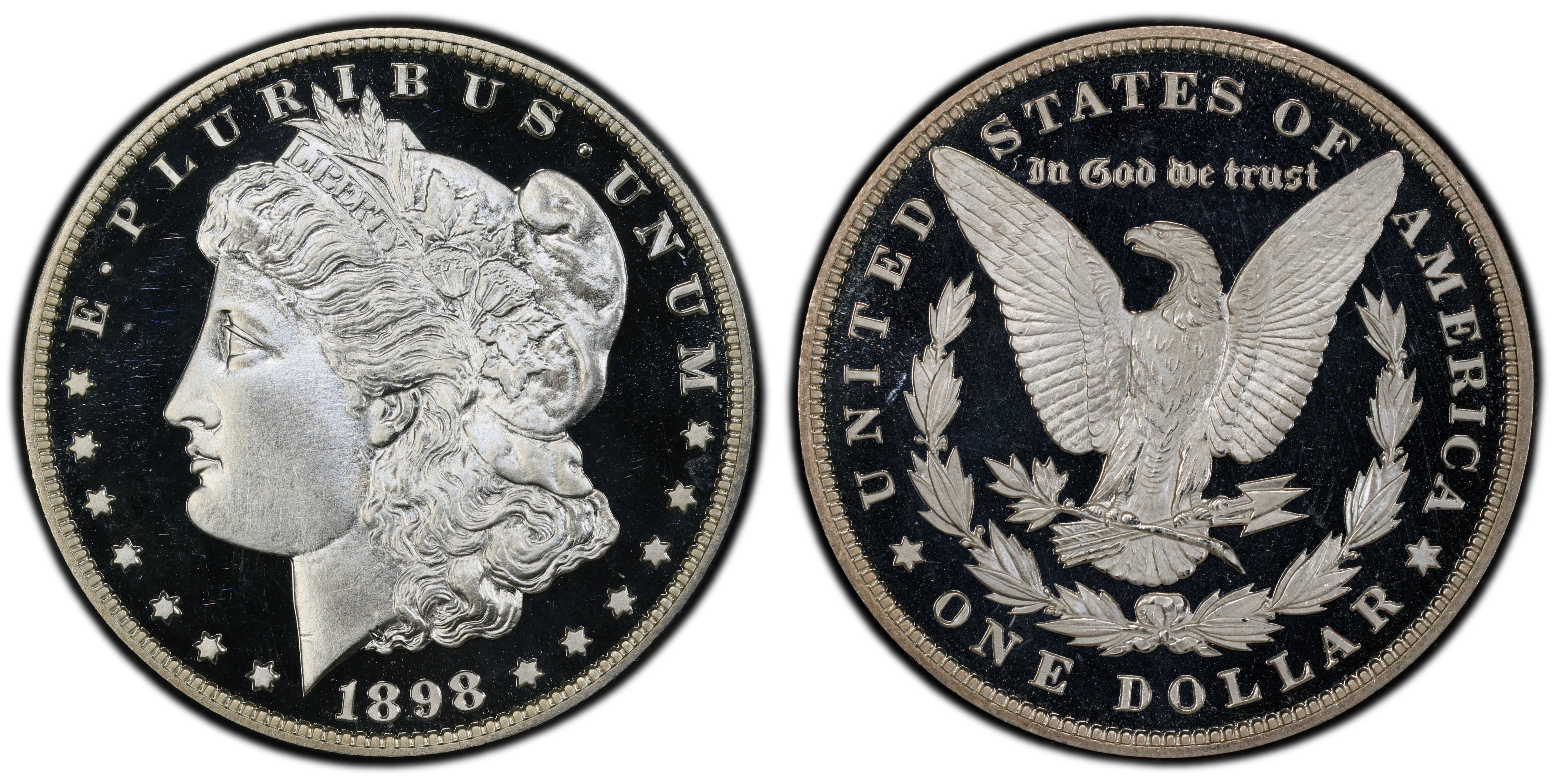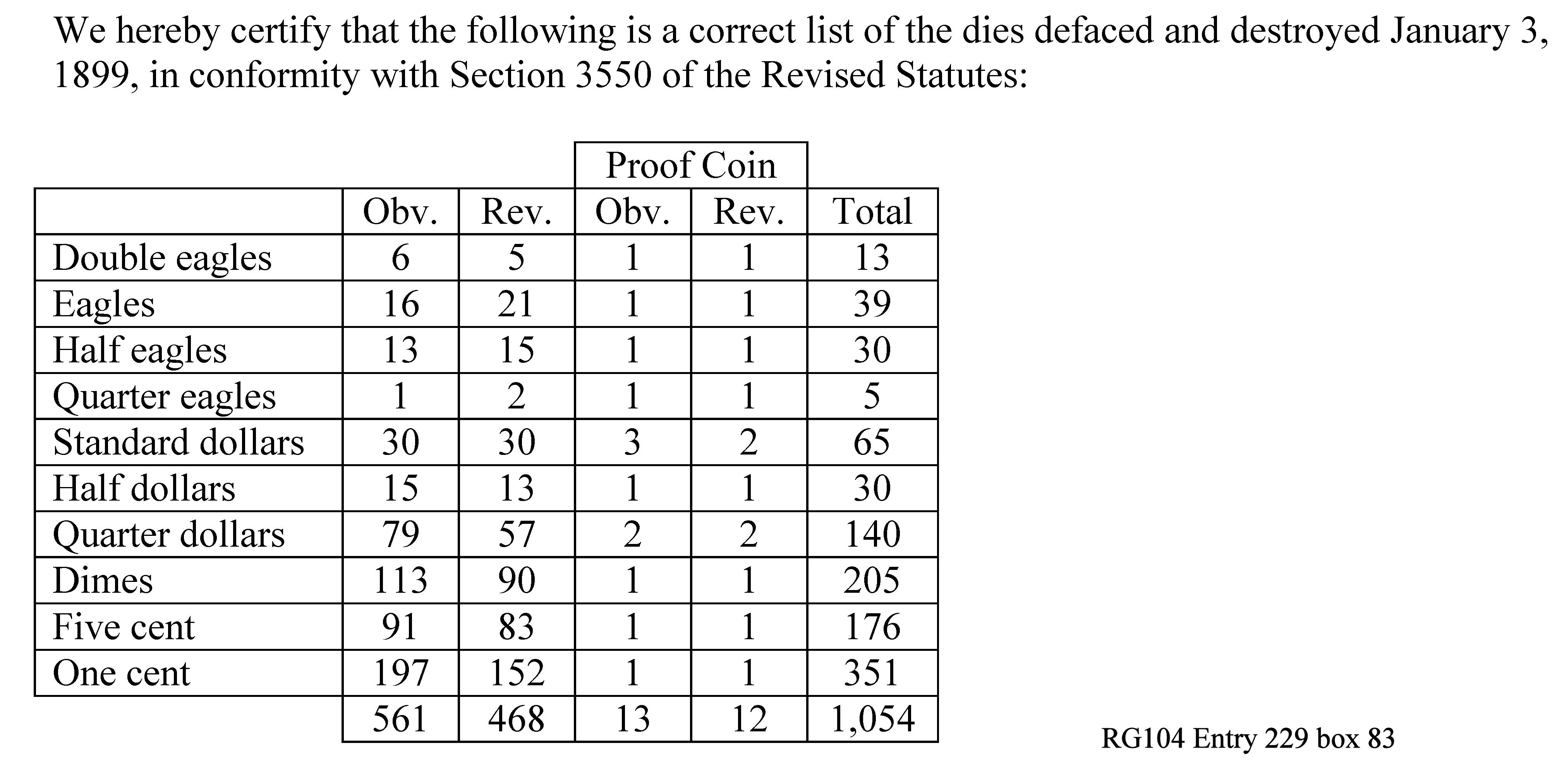The Proofs of 1898 - The Peak of US Proof Production
 FlyingAl
Posts: 4,122 ✭✭✭✭✭
FlyingAl
Posts: 4,122 ✭✭✭✭✭
In many series, there's often a date or type that is considered the "best", whether it be for strike characteristics, color tendencies, or number of available (or not available) examples.
For Proofs, each and every year has their own "tendencies", whether it be for color, contrast, or mirror depth. 1898 marks a year of incredibly high quality for US Proofs, often not rivaled in any other year. After decades of producing collector coins, the Mint hit a "groove" in 1898, and the ensuing coins are nothing short of incredible. Decades would pass before the Mint again achieved this level of quality.
Common deficiencies in earlier and later years appeared most frequently with depth of mirrors and quality of frost. Strike issues were somewhat frequently encountered, and excess die polish often hindered the appearance of high grade examples. In some years, DCAM examples are not commonly encountered, but for 1898 they are more abundant. Consistency of frost is also key, since in many earlier and later years the frost would show patches of strength or weakness, where in 1898 it more commonly consistently strong.
Most, if not all, of the grade information is based upon PCGS and CAC grade reports. Due to the focus on high end examples, PCGS data was selected since a large number of high grade NGC classic Proofs are either crossed or attempted to cross at PCGS. I personally find their grades to be slightly more accurate, although at the upper echelons of Proof grading accuracy is hard to achieve.
I'll start with halves and dollars and maybe add eagles/double eagles later on, but if there's interest I'll finish out the whole year's production. I also focus mainly on DCAM examples, as that best encapsulates the epitome of Proof coinage. Loss of frost is a byproduct of die production being slightly subpar or die wear in production.
.
.
.
Halves
.
.
.
Proof Barber halves are a frequent favorite for type collectors, and finding a perfect example can be a challenge. 1892 is a common choice due to a high mintage, but overall quality is generally quite poor. DCAM examples show weak frost, weak mirrors, and are often lower in grade. 1893, 1894, 1895, and 1896 show similar issues, with each year improving slightly over the last. 1897 shows a marked improvement in quality, but strike weakness and slight reverse frost weakness make it inferior to 1898. 1899 shows a loss of quality, and the best examples of the year fall solidly in the CAM category, with the single PCGS 69 being an 1899. 1900 alone can really truly challenge the authority of the 1898 for sheer eye appeal, but obverse over polishing and excessive die polish plague some of the best examples. This does not appear to be a major defect found on 1898 examples.
.
A 1897 half shows strike weakness on the eagle's right wing:
.
A 1900 half shows overpolishing on the back of the head and top leaves, as well as excessive die polish in the reverse fields:
.
1898 halves as a whole present incredibly well. The Simpson 1898 pictured below appears to be the highest quality half of the year known currently, with characteristic deep sparkling mirrors and chalky white frost. Strike is often strong, but one die pair appears to show strike weakness on the eagle's left wing. This is fairly uncommon and can be quite easily avoided. Die polish does not appear to be excessive and high quality DCAM examples are not incredibly rare. CAM coins with stronger than average contrast are similarly available. The issues commonly found with halves of the era are seemingly lacking.
.
.
.
.
.
.
.
.
.
.
.
.
.
.
Dollars
.
.
.
The 1898 Morgan Proof can be considered to be the best Proof ever produced in this era of coinage, simply due to size and quality. The coins reached an insanely high standard of quality, with surfaces showing chalk white frost and impeccable mirrors. Never before had coins of this size looked like this, and they never would again. While years like 1896 and 1899 produced Proof Morgans with similar quality to 1898, they lacked the sheer depth of mirrors and thickness of frost the 1898s showed. Even the famous 1895 shows lacking mirrors and only slightly above average frost. Following 1900, quality of Morgan Proofs dropped rapidly, with no DCAM examples being known in any of the following 01-04 years.
A 1896 Proof shows weak frost, which is the average for the 1890s years:
.
A 1899 Proof shows excessive obverse and reverse die polish and ever so slightly lacking frost:
.
There are three PCGS PR68DCAM CAC 1898 examples, with several more NGC 68DCAMs. A NGC PR68+*DCAM is likely the highest official grade. Of this group of 5 or 6 esteemed Proofs, the best among them depends on personal preference. As a whole, undipped 1898 DCAMs suffer from haze of varying degrees, and the PCGS PR68+DC shows some amount of haze (top coin). The below dipped white PR68DC (bottom coin) owned by @Floridafacelifter represents an example freed from presumably some amount of haze. Perfect strikes are matched with thick frost and jet black mirrors, presenting the epitome of DCAM contrast. A shimmer appears on the surface of the frost creating something of a lustrous appearance, a quality not found on any other year of Proofs.
.
.
.
Comments
Awesome analysis! Thank you.
The quarter is no slacker either:
https://d1htnxwo4o0jhw.cloudfront.net/pcgs/cert/48417875/271742855.jpg
30+ years coin shop experience (ret.) Coins, bullion, currency, scrap & interesting folks. Loved every minute!
Great post @FlyingAl
I agree 1898 is a wonderful year for proof Morgans- and I’ll add two more to the examples- one with the chalky cameo surfaces but the haze you described, and one of my favorites which is numerically superior to all others- deeply purple toned with cameo contrast and highly reflective surfaces- one of my very favorite proof Morgans in my collection.







And for kicks a quarter
68+DCAM CAC
Thanks for the analysis. I was one of the first collectors of cameo proofs. NGC was the first to start calling Cameos. PCGS followed. It was a guessing game as to what coins would be rare in cameos or deep cameos. I told dealers that the 98 would be the easiest. I have assembled date sets in deep cameos/cameo for the years 1882,1897, and 1898. I was accumulating cameos/deep cameos and I realized these were the dates I was having the most luck with so I completed the sets.
735 proof quarters were minted in 1898, and the two so far pictured in this thread were struck from different obverse dies.
30+ years coin shop experience (ret.) Coins, bullion, currency, scrap & interesting folks. Loved every minute!
Throwing this in the mix.....PF-68. No Cam designation on this one, although the untoned portion of the obverse device shows some cameo contrast.
@Floridafacelifter that 1898 is not to shabby. It's one of my favorites too!
Student of numismatics and collector of Morgan dollars
Successful BST transactions with: Namvet Justindan Mattniss RWW olah_in_MA
Dantheman984 Toyz4geo SurfinxHI greencopper RWW bigjpst bretsan MWallace logger7
I suppose this begs the question - which one?
The Morgan of course with that said the others are very nice as well.
Student of numismatics and collector of Morgan dollars
Successful BST transactions with: Namvet Justindan Mattniss RWW olah_in_MA
Dantheman984 Toyz4geo SurfinxHI greencopper RWW bigjpst bretsan MWallace logger7
I’m afraid there’s two Morgan’s.
.
I'd bet sheer luck played a significant part in it - a slight change in die production could have caused the increase in quality. That could have been staffing changes or some other reason. I doubt we'll ever know for sure.
The 1899 and 1900 proof Morgans are also very well struck with deep mirrors and good cameo contrast, but there is a dramatic change in the 1901 proof Morgans and later dates. I’ve always wondered what changed at the mint after the 1900 Morgan proofs were struck- did they change equipment, did someone retire???
There is exactly ONE 1901 deep cameo ( or in this case ultra cameo) coin in the combined populations of NGC and PCGS, pictured below.



.
A new press would affect strike quality, whereas the number of DCAM coins is a distinctly die preparation effect.
Really great thread!
I've often wondered the same thing, the quality of post 1900 Morgan Proofs is terrible compared to the ones issued pre 1900. But at the same time, they kept getting worse for the next 3 years.
At least for 1901 there are 45 pcgs graded CAM's. For 1902, 1903 and 1904 there are 3, 7 & 1 respectively.
So even if they changed equipment which would explain the stark difference between pre and post 1901 proofs, what happened to continue degrading the quality for the next couple years?
Yep they are few and far between post-1900



Those are gorgeous coins. Love them.
I've been playing around with a set a couple grades lower...but this is the best contrast 1904 I've been able to find so far. Close, but not quite there....


Very informative post, FlyingAl! And great coins everyone!
Interestingly there are very few certified Deep Cameo and/or Ultra Cameo Proof liberty gold coins after 1901.
I checked CAC pops out of curiosity and found that for Proof Deep Cameo gold after 1901:
5 quarter eagles (3-1904, 1-1906 and 1-1907), 0 $5's and two $10's both 1906. Something definitely changed at the mint between 1900 and 1902 for silver and gold Proof production.
You’re right @Coinbert


I notice the same trend in 1900 and earlier proof $20s vs post-1900 $20s!
My low grade Deep Cam
Low grade haha @Coinbert
Wayne Miller in his book "The Morgan and Peace Dollar TextBook"
states that the Proofs from 1896-1898 " evidence the most awsome
cameo contrast of any of the Proof Morgans". Under the date "1898"
he states that " the Philadelphia mint was as close to perfection
as possible". "Of the 5 most breathtaking Proof Morgans the author
has seen, 3 were of the 1898 issue". The book was published in the
mid 80's.
Some extra info regarding dies and coins struck from Roger Burdette:


.
I'd agree, but the two new presses were 350 and 450 tons according to the document you posted, whereas the old press was 1000 tons. It's just more likely it's random variance that happened to peak in 1898 causing the increase in quality.
x